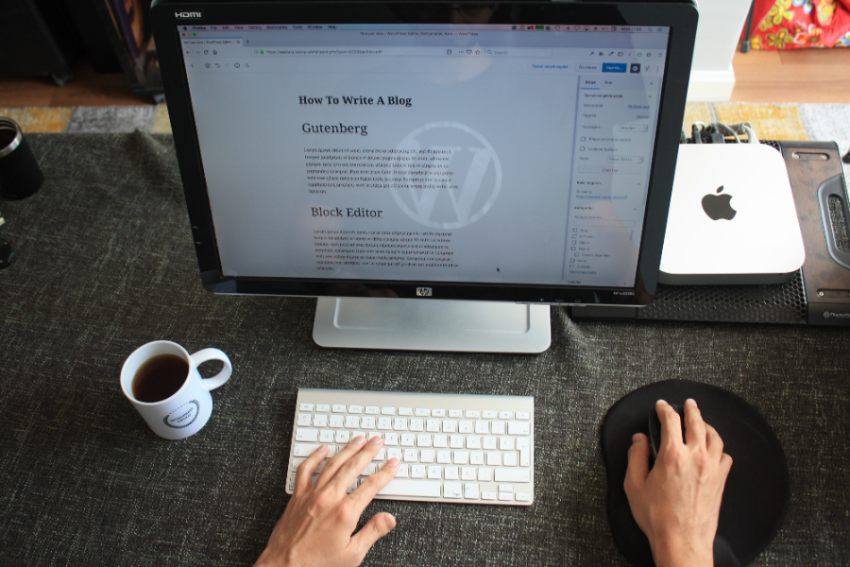
Have you ever sat down to write a blog post but struggled to make a start? You’re not alone. Blogging can be really difficult and many people experience writer’s block. However, we’ve found success by following a simple blog writing template that we think you could benefit from too. Although it’s mainly new writers who make use of templates like these, there’s nothing wrong with more experienced writers sticking to this tried-and-tested format as well.
Without further ado, let’s take a closer look at our step-by-step blog writing template.
Step-by-step blog writing template
1. Plan your content and create an outline

Before you even begin writing anything, you’ll need to decide what it is you want to teach your audience. This can start off relatively simple at first. For example, if you’re a financial advisor, you might want to offer money-saving tips. Once you’ve done some research, you might choose to expand on this and discuss how to save money on a limited budget.
Now that you’ve decided what it is you’re going to write about, you need to identify your blog style. Taking the money-saving tips blog as an example, you could choose to do a listicle e.g. ‘7 ways to save money on a tight budget’. Other options include:
• How-to guides
• Tutorials
• Cheatsheets
• Checklists
• Reviews
• News-style pieces
• Infographics
Next up is to decide on your key takeaway – what do you want your readers to know after they’ve read your blog post? For saving money on a tight budget, this might be that the hardest thing about saving money is getting started. It’s important that you determine your key takeaway before you start writing, otherwise, you’ll end up with a generic and overwhelming topic.
2. Come up with a few working titles
Now that you have a plan for your blog post, you need to come up with some working titles. Your working title probably won’t end up being the final title you use, but it will guide your post so you can start writing. Again, let’s take a look at our saving money example.
Chosen topic: Saving money on a limited budget
Working title: How to save money on a tight budget
Final title: 7 ways to save money on a tight budget
You’ve got your plan and your working title, so now it’s time to begin writing. But where do you start?
3. Introduction

Your introduction lets your readers know what the problem is and how you’re going to solve it. Remember, you don’t want to provide the solution in this section, simply focus on why you’re going to solve the problem they have. It’s important to be relatable here as you want to encourage people to carry on reading.
Simply follow the formula we’ve listed below. You can swap out any of the words or phrases, but try and stick to this layout as much as possible.
1. Start with a compelling sentence that emphasises with the reader. Have you ever…
2. Follow this up by reassuring them. You’re not alone/ we’ve been there too
3. Explain the problem in further detail. Many people have experienced…
4. Tell them how you’re going to fix it. We found success by…/ here are a few things you should do/ This post will tell you what you need to know…
It’s important to remember that you don’t have to start with the introduction; some people prefer writing this last. The introduction will set the scene for what’s to come, so if you’ve only created a basic outline, you’ll have a better idea of what that is once you’ve written the main body. Belinda Pollard at Small Blue Dog explains in more detail why it’s beneficial to leave your introduction until the end.
4. Main body
The main body of your blog post needs to provide the answer to the problem you discussed in the introduction. There’s no wrong or right way to set this out; you might opt for a listicle, multiple paragraphs with subheadings, or bullet points. Make use of whichever format best helps you solve the reader’s problem. If this is a combination of all three, then that’s fine too.
To start, make sure you write a compelling header that shows the reader you’re now getting to the main part of your post. After all, this is the content they are here for! Next, list each step involved in the process and be as detailed as you can about how this will help them.
Again, if your blog post is about helping people save money on a budget, your header could be ‘How to save money on a tight budget’. Then, each of your 7 steps should have its own subheading and paragraph. Based on this example, these headings might include ‘negotiating your energy bills’, ‘taking a packed lunch to work’ or ‘paying off your debts’.
5. Conclusion

Along with the introduction, the conclusion is an often-dreaded part of the blog writing process, but it doesn’t need to be. All you need to do is summarise the key thing your readers will take away from the blog, which you’ll have already planned earlier, so don’t be afraid to be as succinct as possible – you don’t need to over analyse anything here.
If you’re hoping to encourage conversions or sales, then adding a short call-to-action at the end of your conclusion will be beneficial, but if not, asking the reader a simple question or encouraging them to comment is a great way to promote interaction.
6. Links
It can be really hard to fit everything you want to say into one blog post, so linking to other posts on your website or relevant sources is a great way to ensure your readers have access to all the information they need. Linking to other blog posts or pages often makes you look more trustworthy and can have a positive impact on your SEO if done correctly.
Once you’ve written your blog post, you’ll need to edit it and choose some images before publishing. To try out this blog writing template for yourself, why not sign up to Copify? You’ll have access to a jobs board where you can choose from a range of different writing tasks with clear briefs and full support.

Jess Thistlethwaite
Jess is Content Director at Copify. Her main interests include writing, copy editing, and social media marketing. Holding a journalism degree from the University of Chester, she graduated with a Bachelor of Arts in 2016. With a passion for both art and music, Jess enjoys playing the clarinet and sketching or painting when she’s away from her desk.
